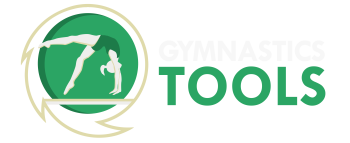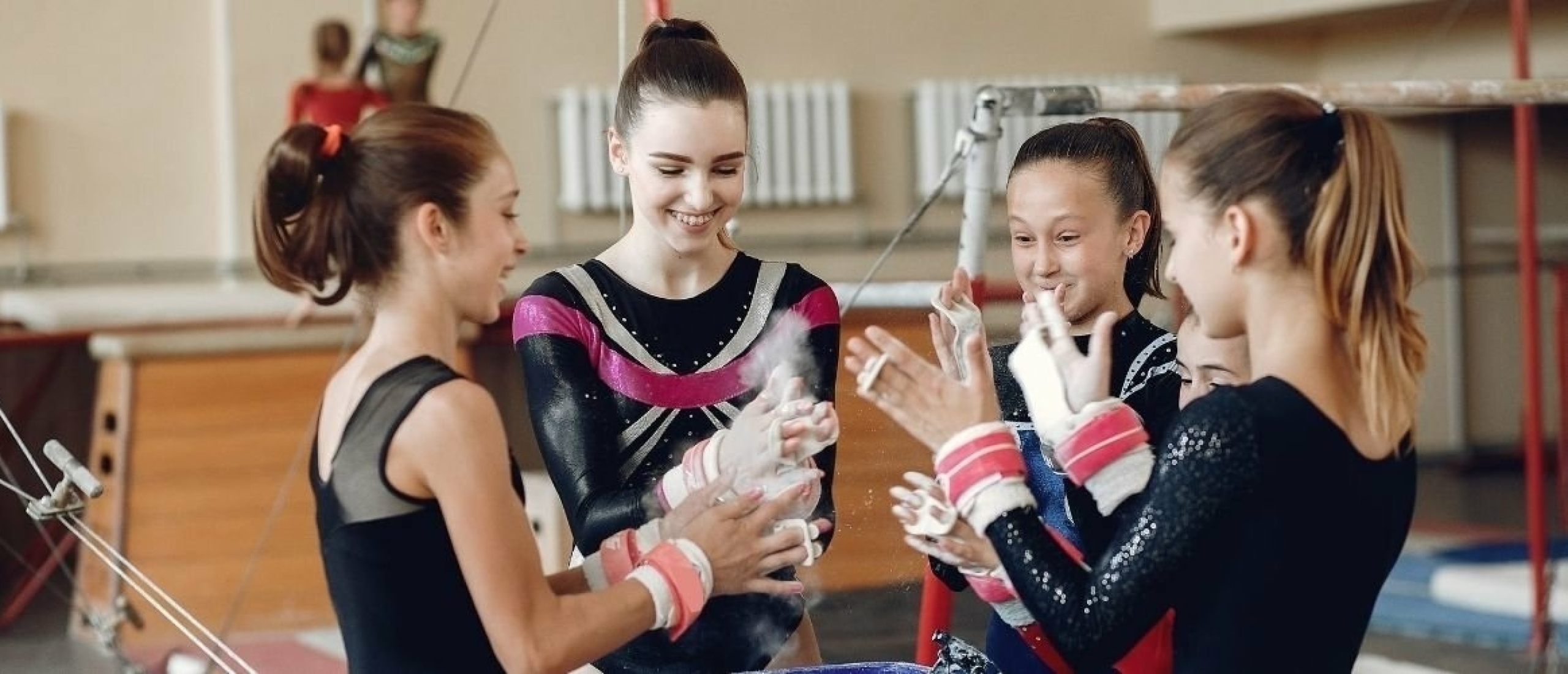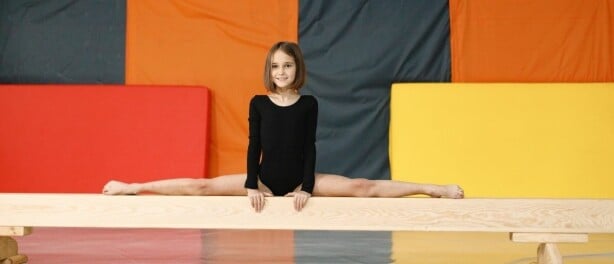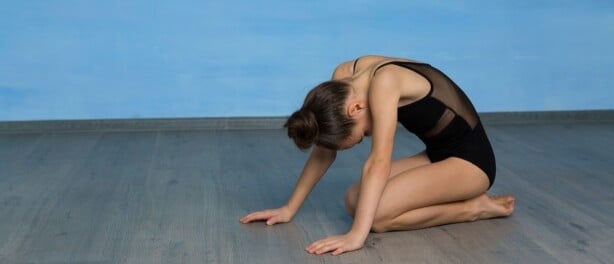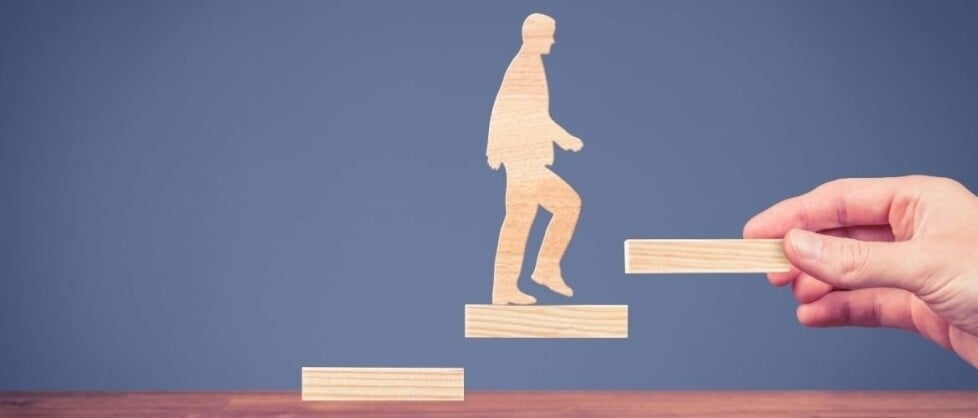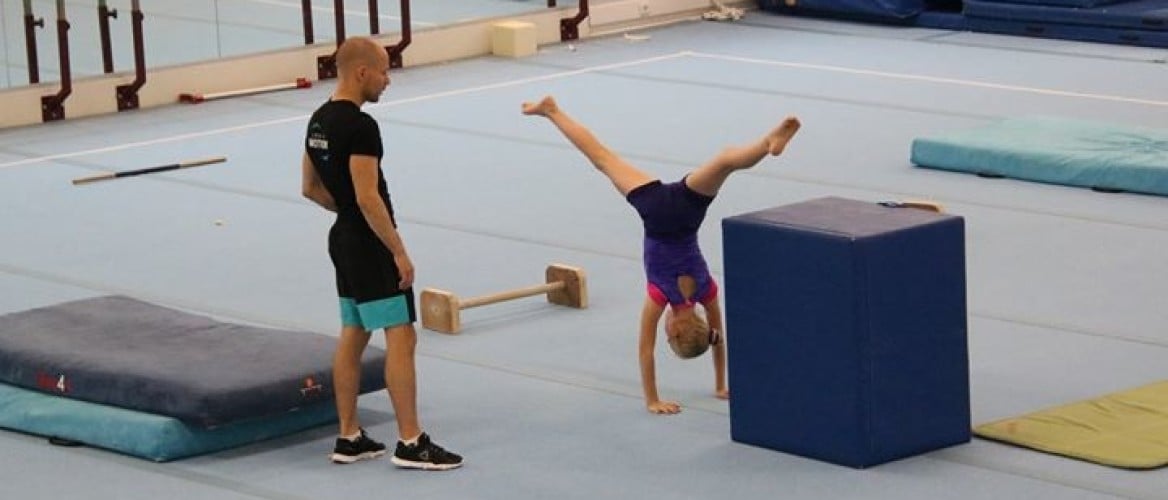How do you raise the level of your gymnastics groups? This is a question I regularly get from several gymnastics coaches. They are often looking for ways to improve or raise the level of a gymnastics group, both in recreational and in selection sports.
The challenge
Trainers and clubs often face the same difficult challenges in this case.
- Few training hours. There are many clubs that have few training hours, especially clubs that train in a gymnasium, where they do not always have priority over all the hours they can claim. For example, volleyball takes up a lot of hours in the hall and therefore the clubs cannot expand.
- Not enough material. Not enough equipment to use during your lessons. As a coach, you therefore face many challenges in order to teach your athletes as well as possible. And you are dependent on the possibilities that you have.
- Little budget.
Raise gymnastics level = train more?
An assumption often made by trainers is that your gymnastics level often increases by training more. If athletes train more, it may be that their level improves. But this is often not without consequences. When there is more training, things happen very quickly. There are many athletes who go from training 6 hours a week to 12 hours a week in one go. For example, if they move from a gym to a dance hall, they train much more in one go. It is then often built up too quickly. This leads to a high risk of injuries. If many injuries occur, the level of gymnastics drops and there are more dropouts. So if you build it up too quickly, there will be fewer athletes and more injured athletes.
In the end, you want to raise the level but often the level of gymnastics drops. So I am more in favour of optimising rather than training more. I am not saying that training more does not work, because it is something that can work well. But be careful how you do it.
Optimising versus training more
I prefer to increase motivation and pleasure rather than train harder. Suppose a gymnast trains three times a week, and she trains well half of the time. Then the question is to train harder or to train more. If, for example, the motivation and the pleasure are not so high, does that person want to train harder? Often we have to see if we can increase the motivation. And whether we can increase the pleasure, and then they often train harder automatically. This will ultimately raise the level of gymnastics. Therefore, if someone is enthusiastic and wants to train more, it is often logical to expand. So as a coach, it is good to first look at the motivation and pleasure of the athletes you teach.
I also prefer a higher lesson intensity to more hours of training. Just think about how much rest there is and how many gymnasts are sometimes doing nothing. Then you can first see if you can intensify the current lesson hours that you have before eventually looking at more training hours to increase your gymnastics level. Sometimes, as a coach, you look too quickly at more training hours. While the intensity is often much more important than the number of hours you train. In this way, you can make better use of your lessons without really extending the hours of training. In this way you can also raise the level of your class more easily.
Practical tips
Try to make smart use of materials and also small equipment.
- Mattresses. You can use these if you have too few mats available. There might be parents who have mattresses left over and sometimes you can use them in the lessons. If you use other equipment that does not belong to suppliers, be aware of insurance and what you do or do not want to use. In any case, there are many alternatives that you can use if your club does not have that much budget.
- Pawns. You can use them in many ways.
- Hoops. I also use them a lot. Not only with the younger groups but also with the older groups you can use them well. And with children with a high gymnastics level as well as with a beginners level.
- Elastics. I also use them a lot.
- Bucket-turn chair. I bought some things at a DIY store with which I made a belly-slinging chair. This is a chair that you can hang on the rack. In this way, an athlete can do the belly turn by himself without the coach having to stand there and carry the belly turn with him. In this way, they can also do many repetitions in a safe way. They can practise the belly turn quickly and easily. It may cost you €5 and an hour of work to put it together and you have something that you can put to good use. This allows several gymnasts to get started and you have more hands free as a coach. If you are not so creative and have a group of young gymnasts. Then a ribbon is a good alternative as a belly flop!
Things you can use to optimise your teaching.
I often take folding hoops with me, as they didn't have many hoops in the hall where I taught. I could fold up the hoops and put them in my bag, then unfold them and use them, for example, to indicate how far the gymnasts should jump with the push-up from the board. As a coach, you probably recognise that for some athletes, foot and hand placement are very difficult. With the help of the hoops you can indicate this better. Fun for every gymnast!
I also often bought some insulating tubes at the hardware store for a few cents. These are very good for indicating certain positions or in this case the foot and hand placement and distances. This works very well and doesn't cost you that much money, and in this way you can optimise your lessons.
Pawns
Here you can also see a photo example of a recreational gymnastics class where I had also bought a pawn. We had some pawns in the hall but you could also put the foldable hoops in the pawns. That way gymnasts could walk over the bench and step through the hoops or step over the hoops. That way I could offer more challenges. I had also brought hats with me that I could turn off certain things. And I had some foam blocks that I had brought along that gymnasts had to step over, for example.
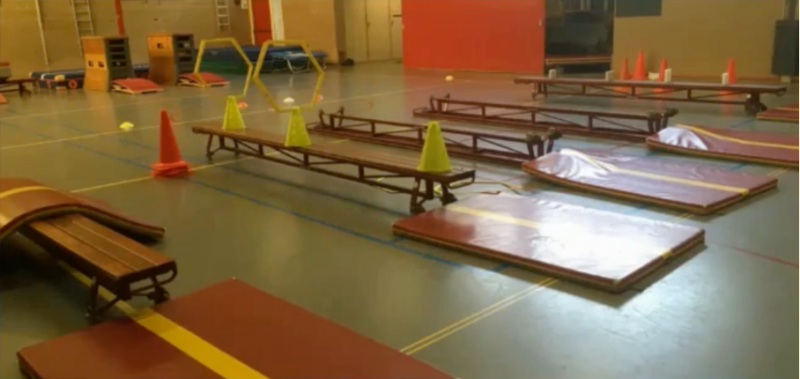
So even if you don't have, for example, punch bags or other small materials, you will see that you can also use alternative materials to make your lessons more fun. So that it is used more intensively and is more challenging. That will at least increase the fun and motivation of your athletes. And it will make the lessons a lot more fun and challenging for you. It is an enrichment of lessons without spending a lot of money.
Examples of the elastics
I myself work a lot with rubber bands, for example to indicate postures or to work with resistance. Resistance is of course a good way to build up some strength. Here you see an example of the swing where a gymnast has to feel with her back if she touches the elastic so that she gets a curve in the swing. You can see that a little bit developing here as well. Because of course we want to see a nice rounded back swing. That was a nice exercise that I once tested with gymnasts.
We can also work with resistance, for example. There are more repetitions and it is a lot more tiring to practise the up-swing, with the result that the up-swing eventually becomes a lot higher. This is a nice way to apply that.
Another way is the swing with resistance. You can use the rubber bands in this way too.
And in the last example, you can see a stomach turner. This is an athlete who had some difficulty with the belly turn and could not do it on her own. As a coach, you often help a lot with the belly turn, in this case the elastic helps her as a kind of belly turn chair where she can still do the exercise independently.
A simple elastic band can therefore be used in many ways during your lessons, you have more options and it becomes a lot more challenging for the athletes.
Examples of the bar
With beam, for example, you can use ropes, which you often have in the gymnasium. Here they are used to indicate height, for example.
You can also work with blocks on the beam to indicate height and distance, but also by giving a challenge. Instead of telling her to jump higher, she is challenged to jump higher.
Jumping rope on the beam is also a fun and challenging exercise. This distracts the athlete from the beam a little more and it also helps, for example, to put less emphasis on the fears they have and more on the fun, to make sure they are practising in a fun way.
In this way, it becomes a lot more fun and challenging than walking or jumping on a stationary bar. These are implicit learning methods that often work better than explicit methods.
What materials can you use in an alternative way?
I had a couple of trapezoids in the hall that were often in the way in the storage room. They were rarely used until I saw a student using them for the chest turn in the hall. Since then I have also started to use them very often. That way it is very easy for the athletes to do the chest move. If you want to practise the chestdump more often with the athletes, you don't need more horizontal bars, but if you happen to have a trapezoid, you can add one. This gives you an extra exercise that you can use.
You usually only use the plankolin for jumping. But I also started to use it for a hiptip handstand or a straddle with hands. That way you can also use it with your hands instead of your feet.
Old horse
I also had an old horse in the hall that I never used. It was always in the way and I was always pushing it aside. Until I thought "Maybe I can use it." In this case, I used it for an overlap and I let it help me as a support, so I could determine the height very nicely. This made it very easy for the gymnast to do the transverse with more help. In this way, I could still use material that was in the way in my gymnastics lessons.
So take a look at what you have in your shed, what things do you not use? How could you use them differently?
Other possibilities
What other things can you do to optimise your gymnastics lessons? And ultimately to raise a gymnast's level of performance?
Internal impact points
Look at yourself as a coach, what can you still improve as a coach to ensure that you optimise things. So that you can get even more out of the current gymnastics lessons you give?
Some tips:
- Try to give shorter explanations. This often ensures that gymnasts are more focused and listen much better. In addition, it will also save you time. So you can train even more in the hours that you have available. Sometimes, as a coach, we have the tendency to give a long explanation. So the athletes only get half of it. That's just a waste of time.
- Try to verify more often. Check that the gymnasts understand what you mean. If they understand what you mean, it is more likely that the exercises will be performed correctly. In this way you get more out of your lessons and you can influence the level of gymnastics much better.
Planning and observing
- Try to observe more often. Often we are very fanatical as trainers, we run and fly around the room and sometimes we forget what could be better. Or what we should do differently. Taking a step back, observing a little more, and seeing where help is needed, and what you can improve, often ensures that you can optimise.
- Prepare even better. If you have been teaching for a long time and frequently, you already have a lot of experience and may not always feel like preparing for a lesson. Even if you have a lot of experience, being well prepared has a huge impact on the success of the lessons you give. Think about lesson preparation, year planning or periodisation. Think about the choice of organisation you have.
The more and the better I prepare, the more I get out of the lessons. For many trainers, this often works very well. It is also something you have to get used to. If you do it often, you also notice that you get more out of it. And then you automatically start doing it more often. So it is definitely a good idea to take a good look at the preparations of all your lessons and planning!
External impact points
The things you can improve from the outside.
- Try to build up and down more quickly. Especially when I look at the many students I coach who are in training: building up and down is very difficult for many coaches. They have to coach a lot of gymnasts, which often takes a long time. So there is an enormous time-saving to be made and it prevents a lot of frustration.
- Try to see if there are still some lessons available. Is there somewhere you can expand? Especially if you have optimised other things, you can look at what else you can do in terms of lessons or possibly outside the hall. You can also exercise outside or in a hall that you can rent, for example. There are all kinds of ways to do that. Nowadays there are also training sessions via Zoom or at home. For example, Gymnastics Tools alternates monthly between an online training and a live training.
- Which materials are you still missing? It is good for you as a coach to know which materials you still want so that you know how to save for them, possibly together with your club and which materials you can use. For example, you can also buy certain things at the hardware store and do it yourself.
Additional offer
- In addition to your training sessions, see what other moments you can offer. For example, extra training sessions or giving assignments. For example, I once gave gymnasts homework. It was not compulsory, but they did get a reward if they did it. That is a positive way of ensuring that they enjoy doing more sport. And to be rewarded for it.
- Outings are also a nice change. Think of camps or other fun sports outings that can contribute to the gymnastics level of the athletes or to the bond between the athletes and yourself. Bonding often ensures that the final result is achieved better together.
Increasing pleasure
This is one of the important points to make sure that the level of gymnastics of your class is going up. This is an important point to check if you can improve this as a coach. In addition, it is good to avoid monotonous lessons. It sounds very logical, but if we have been teaching for a long time we tend to do things by heart. If we do things by heart there is more repetition in the lessons. And if there is one thing that decreases the motivation and pleasure of the athletes, it is monotony. The more they have to do the same thing, the less they enjoy it and the more they drop out. As a result, the gymnastics level within the group will stagnate.
I am not saying that repetition is not good, but differential training is often better. So more variation between the exercises usually makes them enjoy it more. And ultimately, they are better able to apply things and therefore score better at competitions. So repetition is good, but differential training is often more effective.
Make use of challenges. These provide motivation for the gymnasts and they make your lessons a lot more challenging. These challenges can be done at home, but also in the club itself during the training sessions you give. Challenges can certainly contribute to raising the level of gymnastics within the lessons.
Involving athletes
Involve the gymnasts in your planning. Involving them creates more ownership and if the ownership is more with the athlete himself, it ensures that they are more behind it. There is often more motivation and more fun because they had a say in the things they could choose. When I made my planning, I often involved the older gymnasts. And I would ask them what they thought of my planning and what things might need to be changed. That way, they have more commitment to the planning that you want to do.
Let your gymnasts set goals too. This creates more ownership by the athlete instead of you as a coach necessarily setting goals for them. So it can be both, although it often works better if the athlete sets goals himself.
Too little budget?
This is something that often happens at clubs. If you really want to get things done as a coach, you have to take the initiative. For example, I once set up my own camp at a club together with the volunteers of the club. I did fundraisers, so you have a lot of influence as a coach. I also see other coaches taking initiatives for the club. So it doesn't always have to be a board member who provides the income. But as a coach, you have a lot of influence on that. You see that for example in the higher lesson groups or in top sports groups that sometimes have to arrange the entire funding themselves. Some coaches are very good at that, they get a lot done.
As a coach, you can do fundraising for this. There are so many actions you can do. Nowadays you can also do a lot of things online instead of physical fundraising. Most coaches don't feel like going door-to-door. But there are so many more options that you can do, also remotely and online.
Programmes
Gymnastics Tools has a course for this, for board members and coaches.
The course contains endless methods that you can use to raise money for your club fairly easily and quickly.
Sponsorship programmes are also a relatively easy way to generate more income. Think for example of Sponsor Clicks. Gymnastics Tools also has its own sponsor programme. As a partner of Gymnastics Tools, you receive a considerable commission from Gymnastics Tools. You can join as a club, but also as a trainer, and in this way bring in extra income.
Additional tips
Think in possibilities and not in limitations. Sometimes, as coaches, we tend to be a bit negative and look at the limitations. "This is not possible" or "This will not work" or "If this was not there, this would have happened". Instead, look at what is possible and how you as a coach can make it happen. Or where you can exert some influence to make it happen, rather than looking at the limitations that exist.
Work a lot with small materials. It is often easy and it doesn't cost a lot of money, so you can do it very easily. Gymnasts often find it great to do and it makes your lesson a lot more fun. So definitely do it! An easy way to get your gymnastics level up to scratch.
Don't think in terms of apparatuses but in terms of forms of exercise. If you want to practise your horizontal bar and you have a thought of "I need more horizontal bars", you don't necessarily have to. If you look at other forms of exercise for which you do not need extra bars, you can still practise the horizontal bar. So these are other forms of exercise that you can use. There are also many examples of these on our platform. More of our videos can be found on our YouTube channel. Forms of exercise are very easy to expand your apparatus without needing extra apparatus.
Finally
I hope this will give you some tips and ideas to get started with your lessons! If you want more information, we have free downloads on our website. We also have a trainers platform for coaches where there are all kinds of tools to make the lessons easier and faster to prepare. This will help you to raise the level of your club.
If you want to get started with this, you should definitely look at the masterclasses that we have. In which you learn to give training in a differential way instead of the old traditional way that is only about repeating. But above all, how you can apply more methodology and switch more to implicit learning methods. By doing so, you will certainly achieve more results with your own gymnastics courses and gymnasts. As a result, the level of gymnastics can be raised at a rapid pace.
Good luck with your gymnastics training and raising the level of gymnastics!
